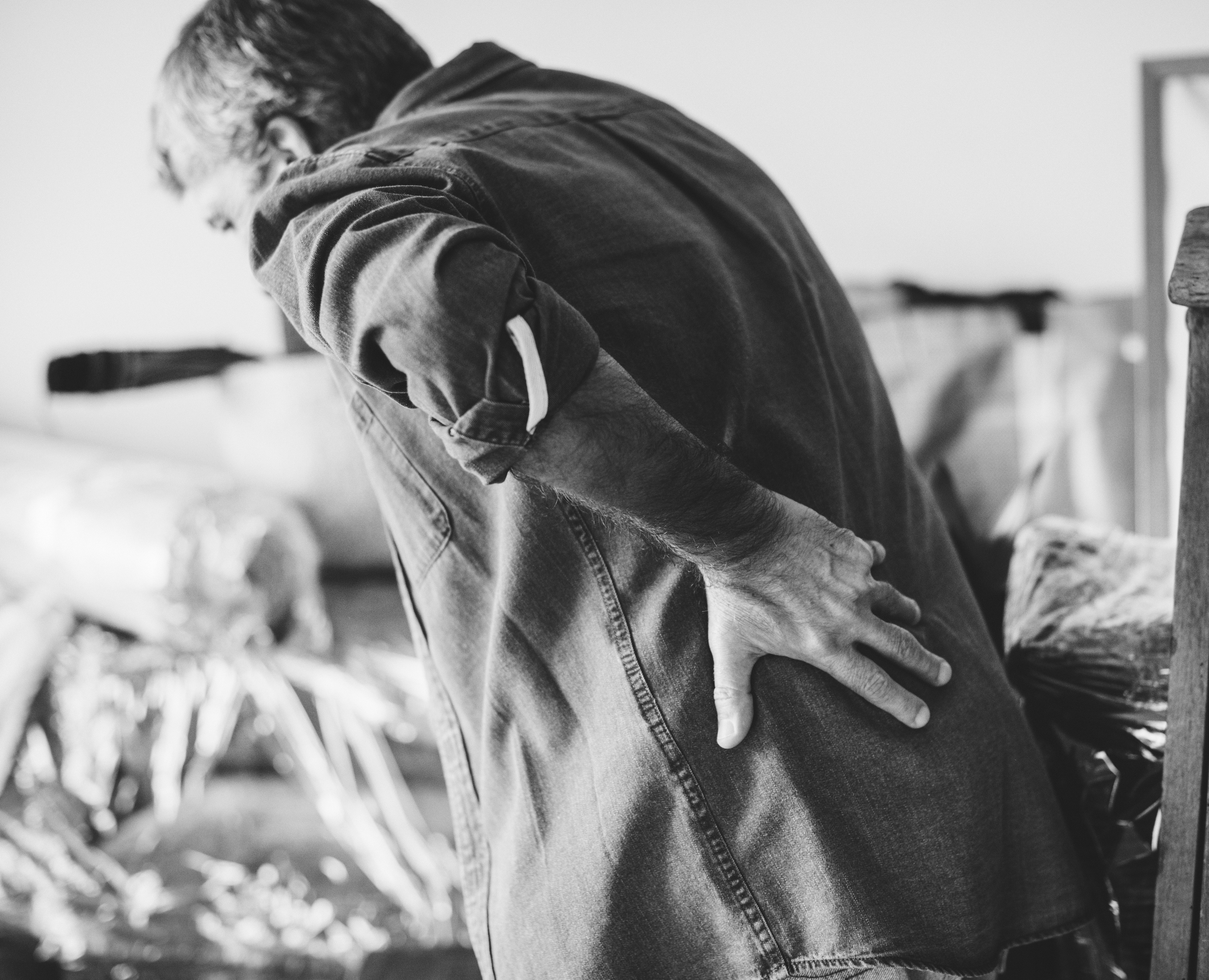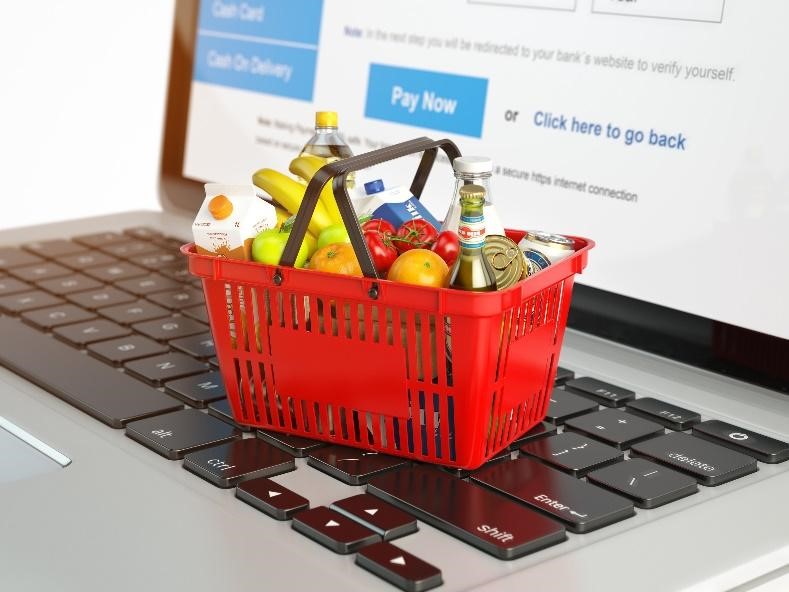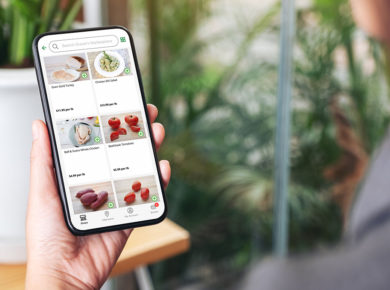When you invite customers into your store, you bear some liability for their safety while they are on the premises. Unfortunately, grocery and produce stores have a lot of potential “hot-spots” for personal injuries. Customers slip and fall on grapes and berries. If it’s raining outside, water and mud can easily be brought inside, overstocked shelves are prone to collapse and items placed out of reach can fall on shoppers. There are many potential scenarios that can play out, which can result in legal action.
However, there are many things you can do (and in some cases are legally obligated to do) to help minimize the risk of personal injuries and accidents at your shop.
Know Your General Liability Coverage
Did you know that some insurance coverage for food merchants also covers personal injury claims and accidents? Make sure you know what sorts of accidents or scenarios your insurance policy covers from a legal/liability perspective, and how to file a claim with your insurer if needed.
Insurance policies are complicated. If you’re unsure of what to do in a situation where a claim arises, and you require legal guidance, we have compiled a brief directory as a starting point.
The world of insurance is potentially confusing, especially if you’re a new business owner or manager. The jargon can be difficult to comprehend (we’ve prepared a guide to help with that), and there are many different insurance types, options, and providers. It can be challenging to determine what coverage you do (and don’t) need (we have something to help with that too).
Protecting Your Store and Your Customers: Be Proactive.
As much as you might not want to believe it, the question “how can I sue a grocery store?” is popular on search browsers like Google. Unfortunately, accidents do happen, and people can take advantage of certain situations or vulnerabilities at your store.
Even one injury claim may set your business back hundreds of thousands of dollars. Being proactive means keeping careful track of what happens in your store, to both prevent the likelihood of accidents occurring and so you can better defend yourself if a dispute arises.
Some proactive measures you can take include:
Do Regular Floor Checks
In a store selling grocery or produce, there are many things that can potentially lead to slip and fall situations: fallen lettuce leaves, packing boxes left unattended, abandoned shopping baskets, etc. Make sure your store has a system in place for doing regular rounds and spot-checks of your store’s floor and premises. This may need to be more frequent than once every hour. The system includes checking for spilled produce, leaky refrigeration, trip hazards, and potholes on your grounds. Train your entire staff on risk factors to look out for, and have a process in place for timely reporting and fixing of issues.
Keep Thorough Logs and Incident Reports
In addition to regularly checking to ensure your premises are clean, tidy and in a safe condition, it is a good idea to keep timely, accurate written logs of how often the store is checked for spills, expired products, and other situations. Recording how often the floor is mopped and swept, who completed each cleaning rotation and when is also valuable information.
If there are any accidents or slips, record the details of every incident with the time, location, people involved, what was said, and what action was taken. The frequency of cleaning rotations may have to increase on occasion, for example during inclement weather. Cautionary signs like “wet floor” or umbrella coverings might be offered upon entry to the store.
There are devices that automatically register when a cleaner has passed a certain point in the store and keep a record. This could help establish and prove the frequency of cleaning rotations. Also, setting up video cameras is not only good for deterring criminal activity and theft but can also help to prove that your store has adequate cleaning systems in place.
Train Your Employees on Safety and Being Proactive
As a business owner, you might not always be readily available to help out in a dangerous situation. Training your employees properly is an important part of being a business owner. Make sure they know who to inform in the event of an emergency, how to fill out an accident report, and any other procedures the state may require. It’s also important to make sure they are regularly conducting and properly recording their in-store maintenance, and using wet floor signs when needed.
You can also teach your employees to take photos (e.g. with their smartphones) of a scene after an incident occurred. For example, if a customer claims to have slipped on a “puddle” – take a photo of the location and the “puddle”. In case of disputes, the customer and the stores account of the size or nature of the hazard may differ drastically. Potential evidence captured at the time of the incident can make the difference between avoiding court or having to settle for thousands or millions of dollars.
Treat Your Customers With Respect
If an accident or incident does occur, treating the person involved with a helpful and kind attitude can also go a long way to prevent more combative or litigious circumstances arising. Demonstrating compassion and care is not necessarily an admission of fault or legal responsibility and can stop a situation from escalating. Making small gestures, like replacing broken jars of mayonnaise, can be helpful to restore goodwill. There are alternative methods to resolve disputes that don’t lead to people taking advantage you or alienate a shopper from returning to your store.
Make a Plan
In the event of an accident or incident in your store, what could the next steps be? Perhaps making sure that a manager is alerted or that someone records as many details of the incident as they can (after ensuring the safety and comfort of the persons involved). Pertinent information to note can include; details of the parties involved, the last cleaning rotation, any cautionary signs that were nearby, photographs of the incident, the time and location of the accident, and what the customer said afterward.
It is important to think about what your plan is in case of different types of incidents.
Personal injury lawsuits can be incredibly problematic for your small business if you don’t know the proper procedures for addressing them. Note that even if a dispute settles or is resolved outside of court, it could still cost you thousands in lost time, legal fees, settlement money, and frustration.
Make sure you train your employees to know what to do in the event of an incident, and that you have proper insurance coverage. Keeping excellent track of your in-store maintenance and cleaning can help to protect you from the fault issue of a personal injury settlement.
Common store hazards to be aware of
Stores are obligated to keep customers and employees reasonably safe. An easy way to do so, is to eliminate hazards on premises. Common slip-and-fall perpetrators like rolled up carpets, wet floors, unattended bags, slippery produce could cost your business a fortune. In 2012, a 58-year-old woman was awarded $415,000 in a Costco slip-and-fall. There was evidence that multiple employees ignored the soap puddle on the floor, failing to clean it up minutes before her fall.
But this is no isolated incident. A fall from the “same level” accounted for $7.64 billion of disabling workplace injuries in 2011, according to the National Safety Council. Appropriate signage for staircases and “risky” equipment, wet floor cautions, cleaning rotations, proper employee training
Here is a (limited) list of hazards to watch out for:
- Rolled up corners of mats or carpets (trip hazard). Solve by taping down mats properly
- Potholes
- Unmarked or irregular steps. Mark with signage or painted edges (white, yellow)
- Wet floors or risky equipment without signage
- Failure to administer regular cleaning rotations
- Failure to roll out non-slip mats in wet weather or put up signs
- Failure to clear rubbish, cardboard boxes or shopping carts from walkways
- Produce stacked precariously on shelves or unstable shelving
- Items or produce left on the floor (fallen grapes, berries, lettuce leaves, etc).
- Uneven or cracked flooring (without warning signs)
- Equipment or furniture with sharp edges (provide buffering or taping)
Please be advised that this article is not intended as legal advice. Please seek professional legal counsel if needed.








